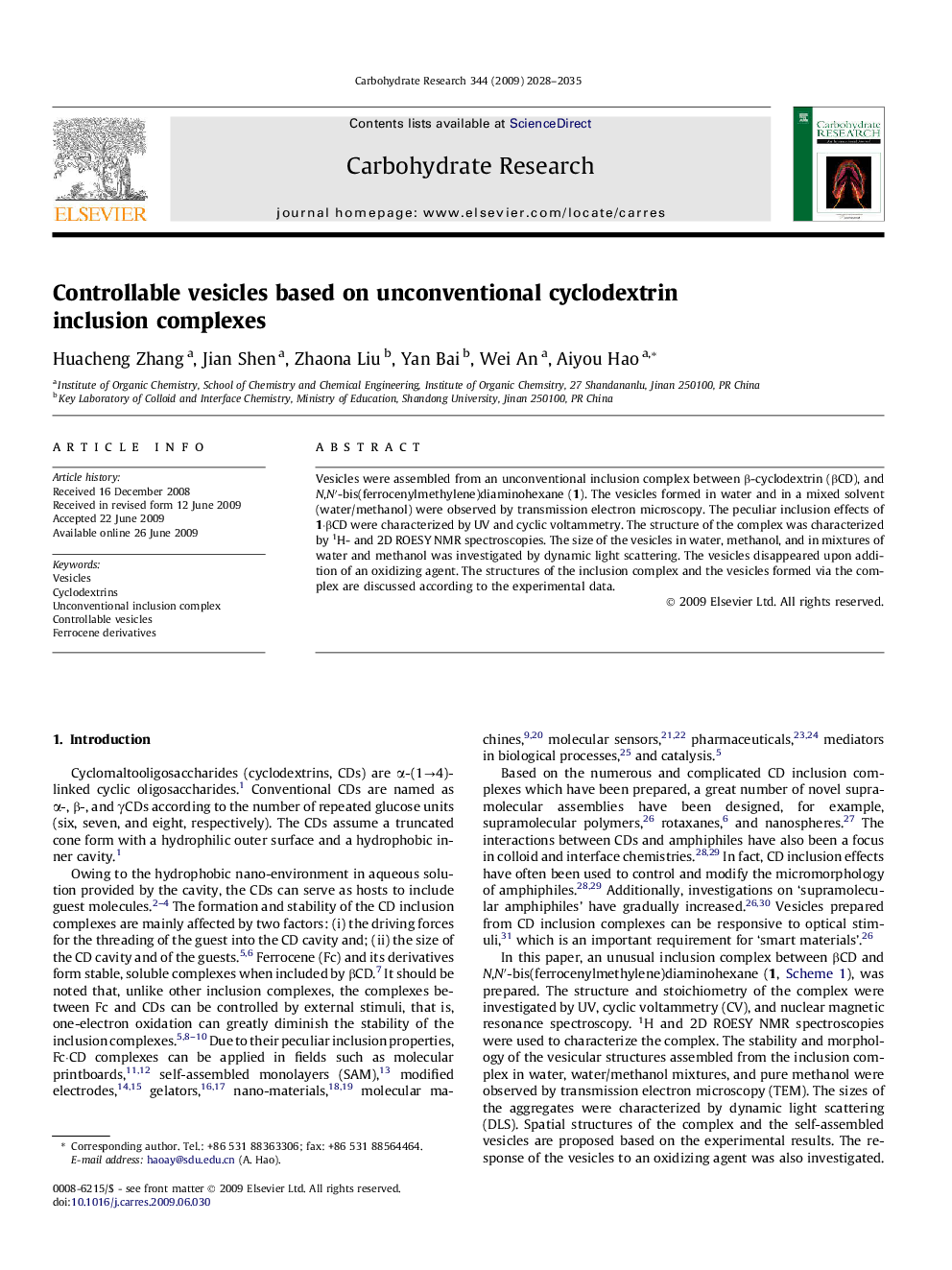| Article ID | Journal | Published Year | Pages | File Type |
|---|---|---|---|---|
| 1388663 | Carbohydrate Research | 2009 | 8 Pages |
Vesicles were assembled from an unconventional inclusion complex between β-cyclodextrin (βCD), and N,N′-bis(ferrocenylmethylene)diaminohexane (1). The vesicles formed in water and in a mixed solvent (water/methanol) were observed by transmission electron microscopy. The peculiar inclusion effects of 1·βCD were characterized by UV and cyclic voltammetry. The structure of the complex was characterized by 1H- and 2D ROESY NMR spectroscopies. The size of the vesicles in water, methanol, and in mixtures of water and methanol was investigated by dynamic light scattering. The vesicles disappeared upon addition of an oxidizing agent. The structures of the inclusion complex and the vesicles formed via the complex are discussed according to the experimental data.
Graphical abstractVesicles were assembled from an unconventional inclusion complex between the host, beta-cyclodextrin (βCD), and guest (1), N,N′-bis(ferrocenylmethylene)-diaminohexane. The vesicles formed in water and in a mixed solvent (water and methanol) were characterized by transmission electron microscopy (TEM) and dynamic light scattering (DLS). The peculiar inclusion effects of 1·βCD were characterized by UV, cyclic voltammetry (CV), and NMR. The vesicles disappeared upon addition of an oxidizing agent.Figure optionsDownload full-size imageDownload as PowerPoint slide
